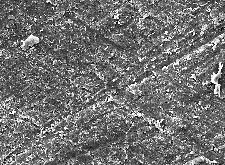Understanding Wear
 What exactly is wear? For many products, it is easy to identify something that is worn. But understanding how it got to that state is not as simple! ASTM International defines wear as "damage to a solid surface (generally involving progressive loss of material), caused by the relative motion between that surface and a contacting substance or substances". In most instances, the material removal is a gradual process and the motion is a repetitive action.
What exactly is wear? For many products, it is easy to identify something that is worn. But understanding how it got to that state is not as simple! ASTM International defines wear as "damage to a solid surface (generally involving progressive loss of material), caused by the relative motion between that surface and a contacting substance or substances". In most instances, the material removal is a gradual process and the motion is a repetitive action.
Wear is a complex phenomenon that is influenced by many parameters. These include, but are not limited to:
- contact geometry
- length of exposure
- interacting material surfaces
- normal force
- sliding speed
- environmental conditions
- material composition and hardness
Depending on the materials involved, the product and/or contacting surfaces may appear to be relatively smooth. In actuality, there are asperities that form the contact junctions of the materials. Similar to the peaks and valleys shown in the diagram, these asperities support the load and tend to deform when the surfaces slide over one another. With repeated movement, material is eventually removed from one or both surfaces.

Wear versus Abrasion The terms wear and abrasion are frequently used interchangeably, but there is a difference. Abrasion is the action that causes wear, and defined by ASTM as "the wearing away of any part of a material by rubbing against another surface". Wear abrasion is removal of a portion of the surface by some kind of mechanical action: rubbing, sliding back and forth of an object, wear of tires on traffic paint, wind erosion, and so on. Mar abrasion is the permanent deformation of a surface but the deformation does not break the surface.


